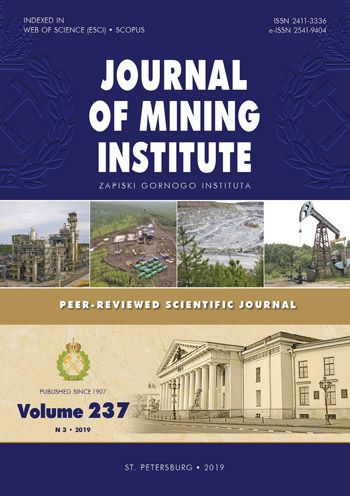Improving methods of frozen wall state prediction for mine shafts under construction using distributed temperature measurements in test wells
- 1 — Ph.D., Dr.Sci. Head of department Mining Institute of the Ural Branch of the RAS
- 2 — Ph.D. Researcher Mining Institute of the Ural Branch of the RAS
- 3 — Junior researcher Mining Institute of the Ural Branch of the RAS
Abstract
Development of mineral deposits under complex geological and hydrogeological conditions is often associated with the need to utilize specific approaches to mine shaft construction. The most reliable and universally applicable method of shaft sinking is artificial rock freezing – creation of a frozen wall around the designed mine shaft. Protected by this artificial construction, further mining operations take place. Notably, mining operations are permitted only after a closed-loop frozen section of specified thickness is formed. Beside that, on-line monitoring over the state of frozen rock mass must be organized. The practice of mine construction under complex hydrogeological conditions by means of artificial freezing demonstrates that modern technologies of point-by-point and distributed temperature measurements in test wells do not detect actual frozen wall parameters. Neither do current theoretical models and calculation methods of rock mass thermal behavior under artificial freezing provide an adequate forecast of frozen wall characteristics, if the input data has poor accuracy. The study proposes a monitoring system, which combines test measurements and theoretical calculations of frozen wall parameters. This approach allows to compare experimentally obtained and theoretically calculated rock mass temperatures in test wells and to assess the difference. Basing on this temperature difference, parameters of the mathematical model get adjusted by stating an inverse Stefan problem, its regularization and subsequent numerical solution.
Funding
The study has been carried out with financial support from Russian Science Foundation in the framework of research project N17-11-01204.
